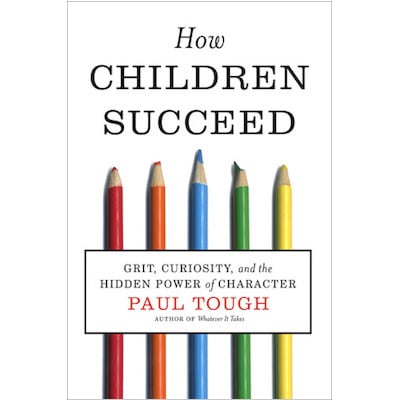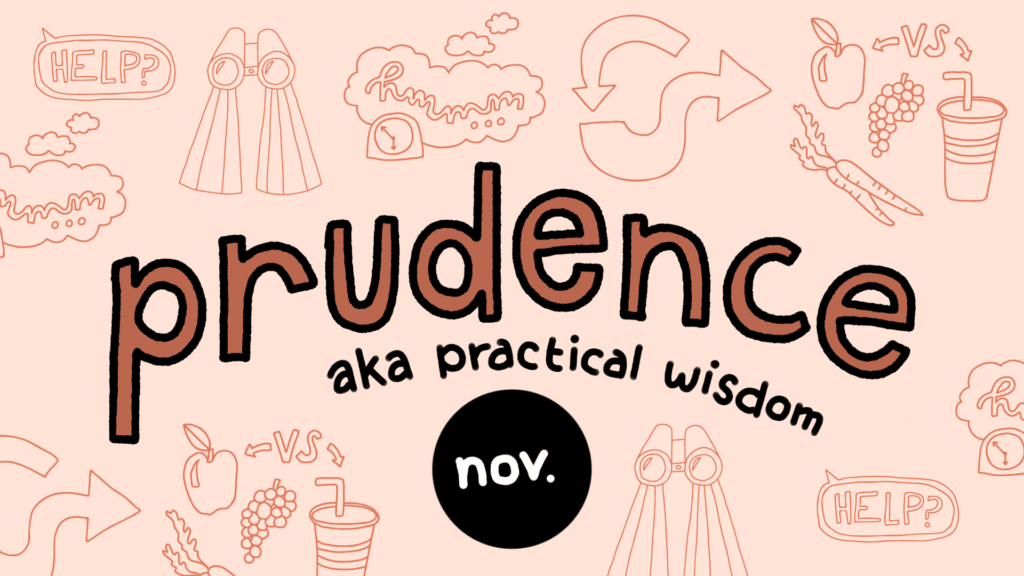
{Up the Stairs by Geraint Rowland via flickr / CC BY-NC 2.0}
Here’s the next installment in our book review series on teaching character. (Side note: this month’s character trait is Gratitude, which is excellent to focus on during the holidays!) Read on to hear about another wonderful resource for parents who who want to nurture strong character in their kids:
Classical Character
Mrs. Burns’ Book Review Blog
Last year Jenna Burns brought us Pedagogic Ponderings, a blog review of books on education. This year she brings us Classical Character, a book review blog examining the interplay of classical education and moral instruction. She is seeking answers to this question: How can we as parents, educators, and a school community shape moral children of uncompromising integrity? In her blog she gives us a snapshot of books on this subject with the intention of providing her readers with a manageable dose of practical inspiration. We hope her blog helps you better understand classical education, character building, and our school.
After teaching History and Language Arts at SLOCA UMS for five years, Jenna remains involved in SLOCA and is currently the WASC Accreditation Coordinator.
 This month I’m reviewing How Children Succeed: Grit, Curiosity, and the Hidden Power of Character by Paul Tough. I chose this book to review because, not only is it about education and character, it is a New York Times bestseller and has 4.5 stars with over 700 reviews on Amazon. I wanted to see what all the hype was about. Besides, how could I pass up a chance to read a book about grit by Mr. Tough himself? So, read this month’s blog to learn about Mrs. Burns’ garden gnome, the case of the licking rats, and several influences on your child’s emerging character.
This month I’m reviewing How Children Succeed: Grit, Curiosity, and the Hidden Power of Character by Paul Tough. I chose this book to review because, not only is it about education and character, it is a New York Times bestseller and has 4.5 stars with over 700 reviews on Amazon. I wanted to see what all the hype was about. Besides, how could I pass up a chance to read a book about grit by Mr. Tough himself? So, read this month’s blog to learn about Mrs. Burns’ garden gnome, the case of the licking rats, and several influences on your child’s emerging character.
 Holiday season is in full swing. Yesterday, a jazzy version of Jingle Bells accompanied me while I walked through isles stuffed with winter décor. Stores always jump-the-gun on Christmas. It makes me feel sorry for Thanksgiving, the middle child of the winter holidays. We had a great Halloween. My daughter dressed up as a garden gnome, and her cuteness level was through the roof. It was around Halloween that I read Paul Tough’s How Children Succeed.
Holiday season is in full swing. Yesterday, a jazzy version of Jingle Bells accompanied me while I walked through isles stuffed with winter décor. Stores always jump-the-gun on Christmas. It makes me feel sorry for Thanksgiving, the middle child of the winter holidays. We had a great Halloween. My daughter dressed up as a garden gnome, and her cuteness level was through the roof. It was around Halloween that I read Paul Tough’s How Children Succeed.
To investigate why some children succeed and others don’t, Tough takes us inside the lives of colorful people in education and research. It’s a coffee shop approach, as if Tough is sitting across from you in an oversized chair, sipping a latte, and saying, “I met this interesting person the other day . . .” I found his storytelling approach very compelling. I was drawn to the “characters” in the book: the tenacious principle of a rough Chicago high school, the eccentric dean of a prodigious private school, and the no-nonsense Brooklyn chess instructor. At the same time, I was, at first, dissatisfied by what seemed like a jumble of ideas that people were trying with their students – some that were working, and some that weren’t.  It isn’t a book that offers a quick-fix solution on the current educational crisis. Tough doesn’t try to be the final word or the foremost authority. He seems content to simply start a conversation, one that begins with: Character formation is what is missing in our schools, so how do we teach character? Grab your own latte, get comfy, and join Tough and me as we continue the conversation.
It isn’t a book that offers a quick-fix solution on the current educational crisis. Tough doesn’t try to be the final word or the foremost authority. He seems content to simply start a conversation, one that begins with: Character formation is what is missing in our schools, so how do we teach character? Grab your own latte, get comfy, and join Tough and me as we continue the conversation.
- Character formation is just as important as information.
Being smart only gets you so far. “‘Learning is hard. True, learning is fun, exhilarating and gratifying – but it is also often daunting, exhausting, and sometimes discouraging [so we] must first recognize that character is at least as important as intellect,’” (64). As a teacher, I fully agree, having seen my fair share of bright students fail to reach their potential. What holds them back is not a lack of intelligence. It is a lack of something else – something more complex and difficult to define. In his book, Rough offers a list of seven traits “especially likely to predict life satisfaction and high achievement;” those traits are: “grit, self-control, zest, social intelligence, gratitude, optimism, and curiosity,” (76). This makes a lot of sense. A child who has these traits – grit (a passionate resolve), zest (great enthusiasm), self-control, optimism, curiosity . . . how could he or she not be amazing and do amazing things?
 At this point in my blog, however, I must for the record say that there is an innate value in character. I promote character for character’s sake. I want my daughter to have a grateful spirit whether or not it means a higher paycheck in her future. Rough makes the distinction between moral character, “which embodies ethical values like fairness, generosity, and integrity; and those that address ‘performance character,’ which includes values like effort, diligence, and perseverance,” (78). The book is very much concerned with the latter, which I find unfortunate. To have the “good life,” which Rough defines as, “a life that was not just happy, but meaningful and fulfilling,” is it not necessary to be moral, to be fair, to have integrity? (59). Are those not traits that everyone – from spouses to employers – seek in others? Do we not short-change our children if we focus only on performance character – especially if we do so at the expense of moral character?
At this point in my blog, however, I must for the record say that there is an innate value in character. I promote character for character’s sake. I want my daughter to have a grateful spirit whether or not it means a higher paycheck in her future. Rough makes the distinction between moral character, “which embodies ethical values like fairness, generosity, and integrity; and those that address ‘performance character,’ which includes values like effort, diligence, and perseverance,” (78). The book is very much concerned with the latter, which I find unfortunate. To have the “good life,” which Rough defines as, “a life that was not just happy, but meaningful and fulfilling,” is it not necessary to be moral, to be fair, to have integrity? (59). Are those not traits that everyone – from spouses to employers – seek in others? Do we not short-change our children if we focus only on performance character – especially if we do so at the expense of moral character?
Rough goes on to explain that character is not simply innate. These “set of abilities . . . are very much changeable – entirely malleable, in fact. They are skills you can learn,” (59). The question, then, is how do children learn character?
- Character is home-grown.
The partial answer to that question is: home environments and the experiences they have with their parents shape children’s characters. Based on scientific studies, we know, “Children who grow up in stressful environments generally find it harder to concentrate, harder to sit still, harder to rebound from disappointments, and harder to follow directions. And that has a direct effect on their performance at school,” (17). Keeping the stress-levels down at home will help a child form a strong character. And when stressful things do happen, a parent’s response can make all the difference.  Consider the case of the licking and grooming mother (or dam) rats. Quite by accident, scientists began realizing that, when baby rats were returned to cages after testing, some dams marked the reunion with lots of licking and grooming (LG). It turns out this behavior had a strong biological effect, calming the young rats and reducing their stress levels. Further observation and testing revealed, “The high-LG offspring excelled: They were better at mazes. They were more social. They were more curious. They were less aggressive. They had more self-control. They were healthier. They lived longer,” (30).
Consider the case of the licking and grooming mother (or dam) rats. Quite by accident, scientists began realizing that, when baby rats were returned to cages after testing, some dams marked the reunion with lots of licking and grooming (LG). It turns out this behavior had a strong biological effect, calming the young rats and reducing their stress levels. Further observation and testing revealed, “The high-LG offspring excelled: They were better at mazes. They were more social. They were more curious. They were less aggressive. They had more self-control. They were healthier. They lived longer,” (30).
I laughed out loud when I read this, remembering earlier in the day when I, being too lazy to get a washcloth, had licked yogurt off of my toddler’s cheek. Little did I know the life-changing magical powers of that simple lick. I kid. Unfortunately (or maybe fortunately) we cannot lick our way to virtuous children. Our lesson from these LG rats is this: “regular good parenting – being helpful and attentive . . . can make a profound difference for a child’s future prospects,” (33). Being responsive to your children’s needs and fostering a secure relationship with them will help them flourish. It’s part of what will shape their character. That is an inspiring and a sobering thought.
- Failure is character’s friend.
We’ve determined that a low-stress environment with attentive parents is a key part of shaping successful children. But there’s a catch. Kids need “a little hardship; some challenge, some deprivation that they can overcome, even if just to prove to themselves that they can,” (84). As parents, our impulse is to carry our daughter and son’s struggles. But, Rough argues, “If we really want him to succeed, we need to first let him fail. Or more precisely, we need to help him learn to manage his failure,” (183). If we do that, we give our children a gift – the opportunity to, “develop the ability to overcome failure and learn from it,” (183).
Not everyone, however, is good at learning from failure. Indeed, it is easy to become discouraged. Pessimistic people, explains Tough, interpret failures as “permanent, personal, and pervasive,” (54). The optimist, however, has, “specific, limited, and short-termed explanations for bad events.” This person is much more likely to learn from a mistake and succeed in the future. Let’s say, for instance, your child earns a bad grade on a math test. You can help your child to interpret this optimistically (“On this math test, I didn’t do as well as I know I could. What can I do differently next time?”) as opposed to pessimistically (“I’m just bad at math”). Helping your child navigate his or her failures will help ensure they are character building experiences.
 Years ago I taught the poem, “The Negro Speaks of Rivers,” by Langston Hughes. In it Hughes repeats the line, “I’ve known rivers,” and ends the poem with, “My soul has grown deep like the rivers.” At the time, I thought it an odd metaphor. Though I haven’t known hardship like Hughes, many years and life experiences later, I can say that I have known my own rivers. My soul has grown deep. Soul depth, it seems, comes only through struggles. So I will not shield Julianna from her rivers, but I will swim alongside her.
Years ago I taught the poem, “The Negro Speaks of Rivers,” by Langston Hughes. In it Hughes repeats the line, “I’ve known rivers,” and ends the poem with, “My soul has grown deep like the rivers.” At the time, I thought it an odd metaphor. Though I haven’t known hardship like Hughes, many years and life experiences later, I can say that I have known my own rivers. My soul has grown deep. Soul depth, it seems, comes only through struggles. So I will not shield Julianna from her rivers, but I will swim alongside her.
Now that I’ve shared my three take-aways from Tough’s book, let me relate it to what’s happening at SLOCA. Our purpose at SLOCA is to educate the whole child – to nurture not just the mind but also the character. We agree with Tough that character formation is just as important as information. Your child’s SLOCA classroom is a second home of sorts, and we agree with Tough that low-stress environments and healthy attachments make a big positive impact. SLOCA teachers, therefore, are intentional to provide safe, respectful classroom environments with an atmosphere of positivity. Teachers strive to know each and every one of their students on a personal level. Finally, at SLOCA, we see the value of failing. For this reason we avoid punitive punishment. Instead, we try to help students learn and grow from their mistakes.
I would recommend How Children Succeed to any parent interested in learning more about current educational research and practices, especially those regarding character, across the poor and affluent schools of America.
Coming up next: Character Matters: How to Help Our Children Develop Good Judgment, Integrity, and Other Essential Virtues by Thomas Lickona. I chose this book because I was intrigued by the claim that it offers more than 100 practical strategies to help kids build strong character.











